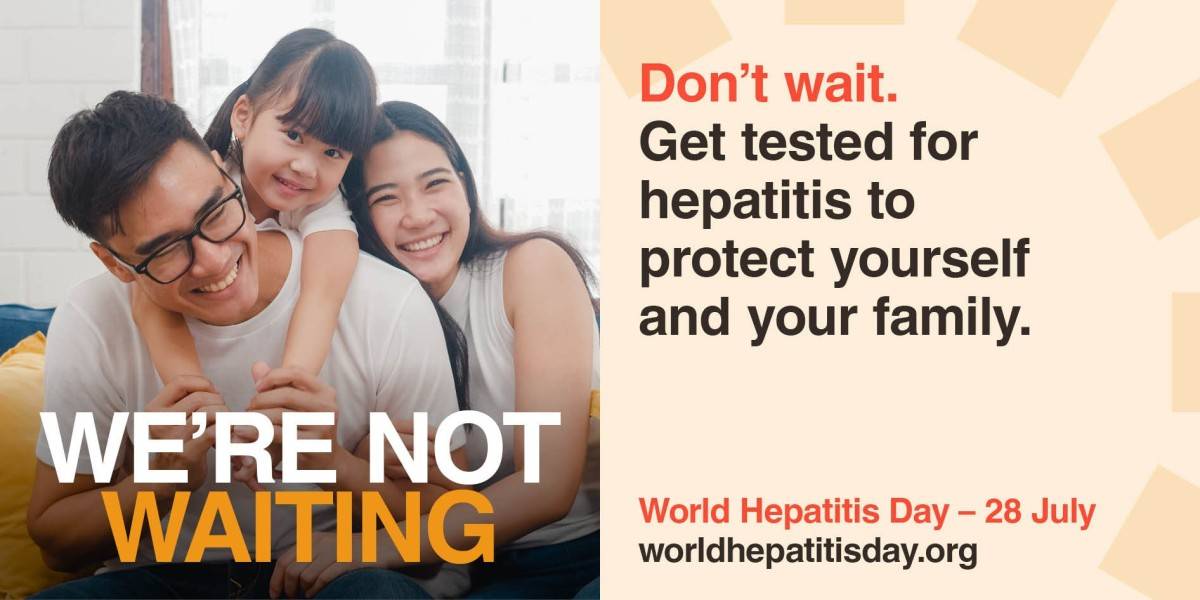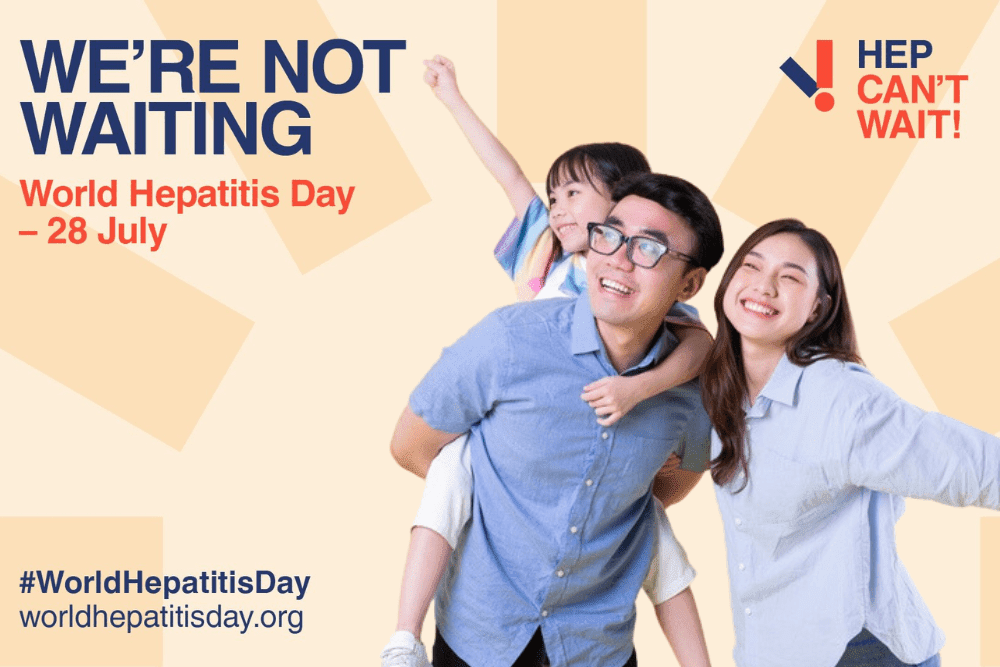Hepatitis, a severe liver disease, is devastating the lives of an estimated 354 million individuals.
Under the banner “One Life, One Liver,” this year’s World Hepatitis Day emphasises the necessity of boosting viral hepatitis prevention, testing, and treatment efforts. World Hepatitis Day is remembered today on 28 July 2023.
Despite the presence of efficacious interventions to diagnose, treat and prevent chronic hepatitis B and C, a shocking 82% of hepatitis B patients and 75% of hepatitis C patients remain undiagnosed. With only 5% and 10% receiving treatment respectively, this silent disease is inflicting serious harm on millions of lives.

Types of Hepatitis
Hepatitis is a medical condition characterised by inflammation of the liver. It can be caused by several factors, including viral infections, autoimmune diseases, and toxic substances, such as alcohol or certain medications. However, viral hepatitis is the most common cause of the disease worldwide. There are five main types of viral hepatitis: A, B, C, D, and E.
View this post on Instagram
Hepatitis A
This type is most often spread through consuming food or water contaminated by faeces from an infected person. Hepatitis A is usually a short-term infection and does not lead to chronic disease. Vaccinations are available and provide effective immunity.
Hepatitis B
Hepatitis B is a potentially life-threatening infection and a major global health problem. It can cause chronic infection and puts people at high risk of death from cirrhosis and liver cancer. Transmission of the virus occurs through contact with the blood or body fluids of an infected individual. A vaccine against hepatitis B has been available since 1982 and is over 95% effective in preventing infection and the development of chronic disease and liver cancer.
Hepatitis C
Hepatitis C usually spreads through blood-to-blood contact, especially via sharing of injection drug equipment or non-sterile medical or tattoo equipment. It can result in chronic liver disease and is often associated with liver cancer. Although no vaccine for hepatitis C is available, antiviral medicines can cure more than 95% of persons with the disease, thereby reducing the risk of death from liver cancer and cirrhosis.
Hepatitis D
Hepatitis D only affects those already infected with hepatitis B. It amplifies the risks linked to hepatitis B. Transmission happens through contact with infected blood. As of now, no effective antiviral therapy exists for hepatitis D. However, we can prevent it with the hepatitis B vaccine for those uninfected by hepatitis B.
Hepatitis E
Similar to hepatitis A, hepatitis E typically spreads through consuming contaminated water or food. It’s usually a self-limiting disease with a low death rate, except in pregnant women where it can result in a death rate of up to 20% among those infected in their third trimester. There is currently no specific treatment for hepatitis E. However, it can be prevented through good sanitation practices and a vaccine that has been licensed in China since 2011.
The Need for Prevention and Treatment
Every year, 3 million new cases of hepatitis B and C emerge in the region, with the majority remaining undetected until the disease has progressed. Effective prevention modalities, such as safe injection, safe blood transfusion, and harm reduction, in addition to therapies or cures for hepatitis B and C, could prevent more hepatitis cases and deaths.
Furthermore, despite significant strides in national vaccination programs, substantial vaccine coverage gaps persist in several countries. This has led to a call to action: to seek out access to hepatitis tests, treatment, and cures, available through all health services.
Achievements and Goals
Notably, there has been significant progress in controlling hepatitis B through national vaccination programs in the region. 90% of infants received 3 doses of the hepatitis B vaccine in 2021, a remarkable improvement from the 49% in 2000. The region has reached the 2020 goal of reducing the prevalence of hepatitis B surface antigen (HBsAg) to below 1% in children under age 5 and is on track to meet the next global targets of 0.5% for 2025 and 0.1% for 2030.
Urgent Call to Action
With the COVID-19 crisis easing, global and national leaders are urged to prioritize a hepatitis-free world and meet the global 2030 targets. Moreover, there is a desperate need for simplified primary care services for viral hepatitis.
We have three crucial objectives to tackle hepatitis. Firstly, it is diagnosing 90% of individuals living with hepatitis B and C. Secondly, to ensure that all pregnant women with chronic hepatitis B receive treatment. Finally, we also need to provide their infants with access to birth vaccines. The third objective is to cure or treat 80% of those diagnosed. This should align with the latest expanded eligibility criteria.
Every Second Counts
The World Hepatitis Day website revealed that every 30 seconds, a person loses their life to a viral hepatitis-related illness. However, with available prevention, testing, and treatment services, every hepatitis-related death is preventable.
The ‘We’re not waiting’ movement, a call to action for World Hepatitis Day 2023, advocates for accelerated elimination of viral hepatitis and urgent testing and treatment for those who need it most.
Conclusion
Hepatitis is a critical global health issue, particularly affecting underserved communities. Therefore, this World Hepatitis Day, it is imperative to heighten awareness, increase diagnosis and treatment rates, and strive to eliminate this devastating disease. The call to action for everyone is clear: “One Life, One Liver” – prioritise liver health, and let’s work towards a hepatitis-free world.

